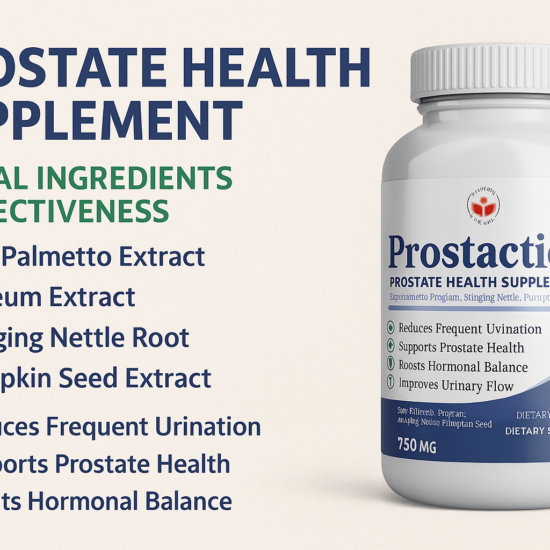Quercetin Plus a powerful supplement you never heard before
Quercetin Plus is a mixture of Herb, vitamin, Enzyme, and Flavonoid which all work together to show various therapeutic benefits with a unique mechanism.
Increased Bio-availability of Quercetin
Ok, first what is bioavailability?
A substance or supplement will only take effect if it can be absorbed by the body, so bioavailability is the key to creating a supplement that delivers proven benefits.
Bioavailability is a measure of how much a substance is able to access the circulation and reach the target area, and it depends on absorption (how much we get it) and secretion (how much we get out).
So, Quercetin is not soluble in water, however, it is a poorly absorbed nutrient. And have a low bioavailability, to increase its bioavailability there is some enzyme-like Bromelain, a protein-digesting enzyme extracted from pineapples and Papain from papaya, and Vitamin C which increases the absorption of quercetin.
Therefore in quercetin plus is typically blended with Quercetin with bromelain and Vitamin c.
Antiviral Activity of Quercetin Plus
Nobel prize winner Szent-Gyorgyi discovered both ascorbic acid (vitamin C) and flavonoid quercetin. Ascorbic acid is an essential vitamin with known antiviral properties which is under investigation for its beneficial effects during the stress response in sepsis and critically ill patients.
Synergistic mechanism of Quercetin and Vitamin C
Combo of Quercetin and Vitamin c work best in Viral infection. There is evidence that vitamin C and quercetin co-administration exerts a synergistic antiviral action due to overlapping antiviral and immunomodulatory properties and the capacity of ascorbate to recycle quercetin, increasing its efficacy.
Mechanism of Action of Antiviral Activity
Quercetin has been studied in various types and models of viral infection due to its promising antiviral effects in inhibiting polymerases, proteases, reverse transcriptase, suppressing DNA gyrase, and binding viral capsid proteins
A multi-drug approach with quercetin and vitamin C may disrupt virus entry, replication, enzyme activity, and assembly, and concurrently fortify the immune response promoting early IFNs production, modulating interleukins, promoting T cell maturation, and phagocytic activity. Quercetin and ascorbic acid co-administration represent an experimental strategy for prophylaxis and treatment of several respiratory viruses.
For COVID-19 patients activity against SARS COV 2( Corona Virus)
Quercetin displays a broad range of antiviral properties which can interfere at multiple steps of pathogen virulence -virus entry, virus replication, protein assembly- and that these therapeutic effects can be augmented by the co-administration of vitamin C. Furthermore, due to their lack of severe side effects and low-costs, we strongly suggest the combined administration of these two compounds for both the prophylaxis and the early treatment of respiratory tract infections, especially including COVID-19 patients.
Reference :
https://www.ncbi.nlm.nih.gov/pmc/articles/PMC7318306/
Quercetin Plus Properties
- Anti-Inflammatory
- Anti Allergic
- Anticoagulant
- Quercetin plus in hypertension and heart diseases
- Quercetin plus in diabetes
- Quercetin plus in Joint pain
- Quercetin Plus as an Antioxidant
Anti-Inflammatory
Quercetin Plus contains Quercetin, bromelain, and Stinging nettle. These all have very good anti-inflammatory properties which make Quercetin Plus effective in various inflammatory conditions including arthritis and asthma which includes Bronchitis.
Pneumonitis. Quercetin Plus is very useful in lowering inflammatory markers like CRP (C- REACTIVE PROTEIN) which is now a day is a serious marker in Covid positive patients indicating serious complications of Covid 19. Let’s know how Quercetin Plus shows anti-inflammatory effects.
Mechanism of anti-inflammatory action
Quercetin
Quercetin blocks the release of inflammatory mediators like cytokines, leukotriene, and histamine quercetin also inhibits inflammation by modulating neutrophil function, prostanoid synthesis, cytokine production, and iNOS expression via the inhibition of the neutrophil factor (NF)-kappa-B pathway
Ref https://www.ncbi.nlm.nih.gov/pmc/articles/PMC4808895/
Bromelain
The anti-inflammatory action of bromelain is mediated by retarding the formation of pro-inflammatory prostaglandins, reducing the cell surface receptors such as hyaluronan receptor CD44 and plasma fibrinogen levels. It also reduces the level of bradykinin, CD4+ T lymphocytes and enhances the activity of serum fibrinolytic thus induces the production of proinflammatory mediators and anti-inflammatory prostaglandins as a result of which the distention and permeability of capillaries are reduced.
Ref
http://www.scielo.br/scielo.php?script=sci_arttext&pid=S1516-89132016000100315#:~:text=Anti%2Dinflammatory%20action%20of%20bromelain,Yuan%20et%20al.%202006).
Stinging Nettle
Several preclinical studies demonstrating the anti-inflammatory therapeutic potential and proposed mechanism of action (MOA) of nettle have been reported, most notably its inhibition of myeloid dendritic cells as well as targets in the NF-kB pathway
Ref https://www.ncbi.nlm.nih.gov/pmc/articles/PMC3529973/#:~:text=Several%20preclinical%20studies%20demonstrating%20the,pathway%20(Riehemann%20et%20al.%2C
Anti Allergic action of Quercetin Plus
Allergic rhinitis has the most common allergic disorder in various regions, affecting 20 percent or more of the general population. Persistent allergic rhinitis was an IgE-mediated inflammatory disorder of the nasal mucosa characterized by continuous symptoms presented for more than 4 days a week consecutive weeks) nasal congestion, rhinorrhea, sneezing, itching, purities of the conjunctiva, nasal mucosa and oropharynx, allergic shiners, lacrimation, ocular symptoms, and fatigue.
The condition could be caused by environmental agents such as dust mites, mold, pollen, fungus spores, cockroaches, grass, animal dander, feathers, and also food sensitivities, structural abnormalities, metabolic conditions, or drugs
Quercetin plus has powerful anti-histaminic properties it’s all four ingredients have strong antihistaminic properties which make Quercetin plus a valuable product in Allergic Rhinitis.
Quercetin is structurally similar to the anti-allergic drug disodium cromoglycate (cromolyn) and has been proposed as a useful treatment for mast cell-derived allergic inflammatory diseases.
Anti-asthmatic activity similar to cromolyn sodium and dexamethasone has been demonstrated in guinea pigs. In-vitro and animal studies demonstrate that quercetin stabilizes mast cells, neutrophils, and basophils inhibiting antigen as well as mitogen-induced histamine release. Inhibition of inflammatory enzymes, prostaglandins, and leukotrienes, and modulation of Th2 excess may further contribute to the anti-allergic effects.
Quercetin plus effective in skin allergy disorders like contact dermatitis, Eczema, and various colds, cough Flu-like symptoms like running nose, and irritation in the eye which is mainly due to the release of histamine from the mast cells.
Bromelain present in Quercetin Plus is said to be effective at treating respiratory distress and inflammation associated with allergies like hay fever, allergic rhinitis, or seasonal allergies, and asthma-like disorder.
Stinging nettle (Urtica dioica) extract was shown to have inserted in-vitro inhibition of several key inflammatory events that cause allergic rhinitis symptoms. These include
- the antagonist and negative agonist activity against the Histamine-1 H1) receptor which blocks histamine production and release,
- the inhibition of mast cell tryptase hindering mast cell degranulation and consequent release of a host of pro-inflammatory cytokines and chemokines that lead to the appearance of allergy symptoms,
- Inhibition of Cyclooxygenase-1 COX-1), Cyclooxygenase-2 COX-2) both key enzymes involved in the induction of many inflammation events associated with allergic rhinitis) and therefore prevention of prostaglandin formation, and
- Hematopoietic Prostaglandin D2 synthase HPGDS) inhibition, which specifically deters Prostaglandin D2 production, a primary pro-inflammatory mediator in allergic rhinitis.
Vitamin C has many important jobs in your body, but it’s probably best known for supporting your immune system, vitamin c also has anti-histaminic properties.
Some people wonder if vitamin C is helpful for allergies, which are immune reactions to substances in your environment. Vitamin C acts as a natural antihistamine and antioxidant. Studies have shown it may decrease inflammation, swelling, and related symptoms that happen at the site of an allergic reaction.
Allergy symptoms happen when your immune system reacts to a foreign invader, called an allergen. Common allergens include pollen, pet dander, and proteins in certain foods. Cells in your immune system called mast cells are activated and release histamine to help block the invader
Quercetin as antiallergic
https://pubmed.ncbi.nlm.nih.gov/18026696/
Bromelain as antiallergic
https://www.ncbi.nlm.nih.gov/pmc/articles/PMC3870104/
Stigning nettle as anti allergic
https://www.ncbi.nlm.nih.gov/pmc/articles/PMC5963652/
Vitamin c as anti-allergic
https://www.healthline.com/nutrition/vitamin-c-for-allergies
Anticoagulant
Quercetin plus is helpful in preventing blood clot formation in the blood vessel and also helpful in dissolving clots so it works as a blood thinner and improves blood circulation in the body which helps in the treatment and prevention of various heart diseases.
Quercetin inhibits the enzymatic activity of thrombin and FXa and suppresses fibrin clot formation and blood clotting.
Bromelain has been effective in the treatment of CVDs as it is an inhibitor of blood platelet aggregation, thus minimizing the risk of arterial thrombosis and embolism
Querecetin as anticoagulant
Ref https://pubmed.ncbi.nlm.nih.gov/27271803/
Bromlain as anti coagulant
Quercetin plus in hypertension and heart diseases
Quercetin in, many experimental and human studies showed that quercetin exerts vasodilator, antiplatelet, and antiproliferative effects, decreasing oxidative status, blood pressure (BP), and end‐organ damage. The BP-lowering effect of quercetin is more evident in subjects with certain comorbidities such as metabolic syndrome or in smokers.
Stinging nettle may stimulate nitric oxide production, which acts as a vasodilator. Vasodilators relax the muscles of your blood vessels, helping them widen in addition, stinging nettle has compounds that may act as calcium channel blockers, which relax your heart by reducing the force of contractions. In animal studies, stinging nettle has been shown to lower blood pressure levels while raising the heart’s antioxidant defenses
Bromelain prevents or minimizes the severity of angina pectoris and transient ischemic attack (TIA). It is useful in the prevention and treatment of thrombophlebitis. It may also break down cholesterol plaques and exerts potent fibrinolytic activity.
A combination of bromelain and other nutrients protects against ischemia/reperfusion injury in skeletal muscle. Cardiovascular diseases (CVDs) include disorders of the blood vessels and heart, coronary heart disease (heart attacks), cerebrovascular disease (stroke), raised blood pressure (hypertension), peripheral artery disease, rheumatic heart disease, heart failure, and congenital heart disease
A high dose of Vitamin c act as an antihypertensive dose is around 500 mg. Scientists have focused on vitamin C’s potential role in blood pressure reduction because of the nutrient’s biological and physiological effects. For example, vitamin C may act as a diuretic, causing the kidneys to remove more sodium and water from the body, which helps to relax the blood vessel walls, thereby lowering blood pressure.
Stigning nettle as antihypertensive
https://pubmed.ncbi.nlm.nih.gov/27585814/
quercetin as antihypertensive
https://pubmed.ncbi.nlm.nih.gov/19307694/
Bromelain in heart diseases
https://www.ncbi.nlm.nih.gov/pmc/articles/PMC3529416/
vitamin c in hypertension
https://www.hopkinsmedicine.org/news/media/releases/big_doses_of_vitamin_c_may_lower_blood_pressure
Quercetin plus in diabetes
Quercetin not only reduces blood sugar but it also prevents diabetic complications As quercetin has been shown to inhibit aldose reductase, the first enzyme in the polyol pathway, a theoretical basis exists for its use in the prevention of long-term diabetic complications such as cataracts, nephropathy, retinopathy, and neuropathy. Quercetin may also provide beneficial effects in people with diabetes by decreasing oxidative stress and preserving pancreatic beta-cell integrity.
Preliminary evidence suggests a possible antinociceptive activity of quercetin, probably through modulation of opioidergic mechanism, suggesting a potential for the treatment of diabetic neuropathic pain
Urtica dioica L. (nettle) leaves have insulin secretagogue, PPARgamma agonistic, and alpha-glucosidase inhibitory effects. Moreover, nettle leaves are used in traditional medicine as an anti-hyperglycemic agent to treat diabetes mellitus.
Nettle may safely improve glycemic control in type 2 diabetic patients needing insulin therapy.
Quercetin in diabetes and its complication
Stigning nettle in diabetes
https://pubmed.ncbi.nlm.nih.gov/24273930/
Quercetin plus in Joint pain
quercetin plus works as an anti-inflammatory and also reduce pain in various joint disorders like Arthritis, lumbalgia, sciatica, chronic tendonitis, sprains, and osteoarthritis.
quercetin in joint pain
https://pubmed.ncbi.nlm.nih.gov/27710596/
Stinging nettle in joint pain
https://pubmed.ncbi.nlm.nih.gov/10581821/
Bromelain in joint pain and inflammation
Quercetin Plus as an Antioxidant
Quercetin is a typical flavonoid that is abundant in fruits and vegetables. Its application in the medicinal field has shown potential to improve human health due to its antioxidant activity in vivo. The antioxidant activity of quercetin is mainly manifested through its effect on glutathione (GSH), enzymatic activity, signal transduction pathways, and reactive oxygen species (ROS) caused by environmental and toxicological factors. Quercetin shows a strong antioxidant activity by maintaining oxidative balance.
Some studies show that quercetin can be used as a nutraceutical to offer protection against various diseases like cancer, heart diseases, etc
-
IncludedQuercetin Plus a powerful supplement you never heard before



 English
English French
French


